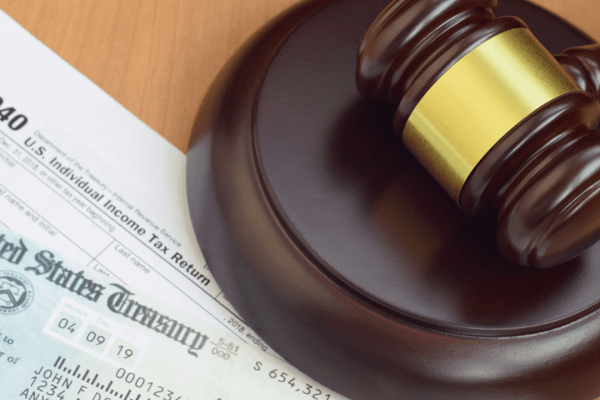
IRS and Debt Forgiveness: Real Options for Taxpayers
IRS and Debt Forgiveness Programs Explained
IRS and debt forgiveness is not just a myth—it’s a real option for taxpayers struggling with unpaid taxes. While the IRS won’t automatically wipe away your tax bill, there are established programs designed to reduce or forgive debt under certain conditions. If you’re facing financial hardship, understanding these options can help you take the first step toward resolution.
What Is IRS Debt Forgiveness?
Debt forgiveness through the IRS generally means reducing the total amount you owe when repayment would cause financial distress.
Forgiveness vs. Relief
“Forgiveness” usually means your tax liability is reduced or eliminated. “Relief,” on the other hand, can include things like installment agreements or temporary collection pauses. If you’re unsure which applies to you, consider getting a free tax case review to understand your situation better.
Based on Inability to Pay
The IRS uses a strict financial analysis to determine whether you can reasonably pay your full balance. If not, you may qualify for a program that forgives part of your debt.
Evaluation Process
Income, expenses, assets, and future earning potential all play a role in determining eligibility.
Offer in Compromise (OIC)
The Offer in Compromise is the most well-known IRS and debt forgiveness program. It allows taxpayers to settle for less than they owe.
What It Is and How It Works
You submit an offer to the IRS based on what you can reasonably pay. If the IRS accepts, your remaining tax debt is forgiven.
Who Qualifies
You must show that full payment would create a financial hardship. Tax filings must be current, and you can’t be in active bankruptcy.
Benefits and Risks
If approved, OIC can eliminate tens of thousands in tax debt. But rejection is common without thorough documentation. Learn how a licensed tax relief attorney can help increase your chance of approval.
Other IRS Relief Programs That Reduce Debt
Even if you don’t qualify for an OIC, you still have options for relief or partial forgiveness.
Currently Not Collectible (CNC) Status
If you’re unemployed or have no disposable income, the IRS may pause collection. Interest still accrues, but you won’t face garnishments or levies during this time.
Partial Payment Installment Agreement
This plan allows you to pay monthly over time, less than the total you owe, until the statute of limitations expires on the debt.
Innocent Spouse Relief
If your spouse filed a fraudulent or erroneous joint return, you may be eligible to have the associated tax debt removed from your record.
Can You Qualify for IRS Forgiveness?
Getting approval isn’t easy, but many taxpayers succeed with proper documentation and support.
You Must Submit Full Financial Disclosures
The IRS wants to see your bank statements, pay stubs, housing costs, and all liabilities. Hiding assets or income is grounds for denial.
You Must Be Compliant
All required tax returns must be filed. If you’re behind, we can help bring you into compliance quickly.
Document Everything
Supporting documents make or break your case. Errors or omissions will delay the process—or result in rejection altogether.
How to Take Advantage of IRS and Debt Forgiveness
If you’re eligible, IRS and debt forgiveness can eliminate years of financial stress. But success requires preparation, patience, and a full understanding of the rules. Many people make mistakes trying to handle it alone. That’s why professional guidance is often the difference between approval and denial.
Speak With a Tax Relief Expert About IRS Forgiveness Options
If you’re overwhelmed by back taxes and don’t know where to start, contact us today. Our experienced tax professionals will evaluate your case, help you apply for the right IRS program, and guide you through every step of the forgiveness process.
Frequently Asked Questions (FAQs)
1. What is the IRS debt forgiveness program called?
The main program is the Offer in Compromise (OIC), which allows taxpayers to settle their debt for less than the full amount owed.
2. Does the IRS forgive all tax debt if I qualify?
Only a portion is forgiven, based on your financial situation. You must prove that full payment would cause financial hardship.
3. How do I know if I qualify for an Offer in Compromise?
You must meet IRS eligibility criteria, including having filed all tax returns and showing inability to pay in full.
4. Can the IRS take my home if I apply for forgiveness?
Applying does not stop collection, but the IRS will pause enforcement once your application is under review and may lift existing liens if accepted.
5. Is IRS debt forgiveness the same as bankruptcy?
No. IRS forgiveness is handled directly through IRS programs, while bankruptcy is a court-supervised process that may include tax debt under specific conditions.
Key Takeaways
- IRS and debt forgiveness are real and available to qualified taxpayers.
- The Offer in Compromise allows partial settlement of tax debt.
- Other options include CNC status and partial payment plans.
- Proper documentation is critical for success.
- Professional support increases the chance of approval.
Free Tax Case Review
If you are struggling with tax debt or have received a letter from the IRS complete the form below.IRS Audit
You received an audit notice from the IRS
Tax Debt Relief
You owe the IRS money and are looking for relief options
Wage Garnishment
The IRS is taking part of your wages to pay off your debt
Tax Lien
The IRS put a legal claim on your property
IRS Property Seizure
The IRS is going to take your property to pay down or pay off your tax debt
Penalty Abatement
You want to request to remove or reduce penalties assessed by IRS
Innocent Spouse Relief
Relief from joint tax debt caused by your spouse or former spouse
Tax Debt FAQ
Common facts, questions and answers about tax debt and tax debt reilef
Tax Debt Lawyer
A tax debt lawyer can help you with your tax debt problems
Recent Posts
- What Is the Difference Between a Tax Attorney and a Tax Lawyer?
- Why Do People Hire Lawyers When Dealing With the IRS: Taxpayer Protection Guide
- Tax Attorney IRS Debt Relief Strategies: Professional Solutions for Overwhelming Tax Debt
- Benefits of Hiring a Tax Attorney for IRS Problems: Essential Legal Protection
- When to Seek a Tax Attorney: Critical Situations That Require Legal Expertise



